Sony doesn’t get as much attention for its Android-powered devices as Samsung HTC do, that’s a shame. For the most part, the company has been consistent with its phone tablet releases, manufacturing modern-looking, angular devices with capable specs. But to really compete with the top tier movers shakers in the Android realm, it has to step up its game. That means adding in features that rival other Android hsets sticking only with current generation processors.
th the Xperia Z1S, Sony packed in a 20-megapixel camera sensor with abilities that rival some of the best-selling Android phones, in addition to a 2.3GHz Qualcomm Snapdragon 800 system-on-chip (SoC). It’s a solid hset worth taking a look at. It’s only serious drawback is that it’s exclusive to T-Mobile’s network.
etty, as usual
 Homnick
HomnickAround here, we always say that Sony’s hsets are “second-tier premium.” The Xperia Z1S in particular is stylish in its shiny glass casing, but it’s still not quite as refined as the HTC One (M8), for example.
ile all the latest phones are getting bigger these days, I didn’t find the Xperia Z1S uncomfortable to hold or type with, despite its uncommonly bulky build sharp edges. However, the Xperia Z1S is already too thick to wear a case to protect its delicate chassis. Its glossy case is also quite the attractor of smudges greasy fingerprints, too. It can get pretty gross.
 Homnick
HomnickBut it’s so thin.
I appreciate the mid-line power volume buttons: they’re easier to hit with my thumb when I’m cradling the phone with one h, that’s normally how I hle a phone when I’m using it to listen to music or check the time.
 Homnick
HomnickThe power button it located halfway up the phone for easy thumb access.
Since it’s waterproof, the expansion slot charging port are hidden behind a tiny door. They shut tightly to keep out water when you dunk it, but as a result you’ll have to really get in there with your fingernail to pop it open. The Xperia Z1S is awkward to use while charging because the port is placed at the top-left side of the device there’s a flap hanging off.
 Homnick
HomnickThis will end up driving you nuts after a while.
st powerful enough
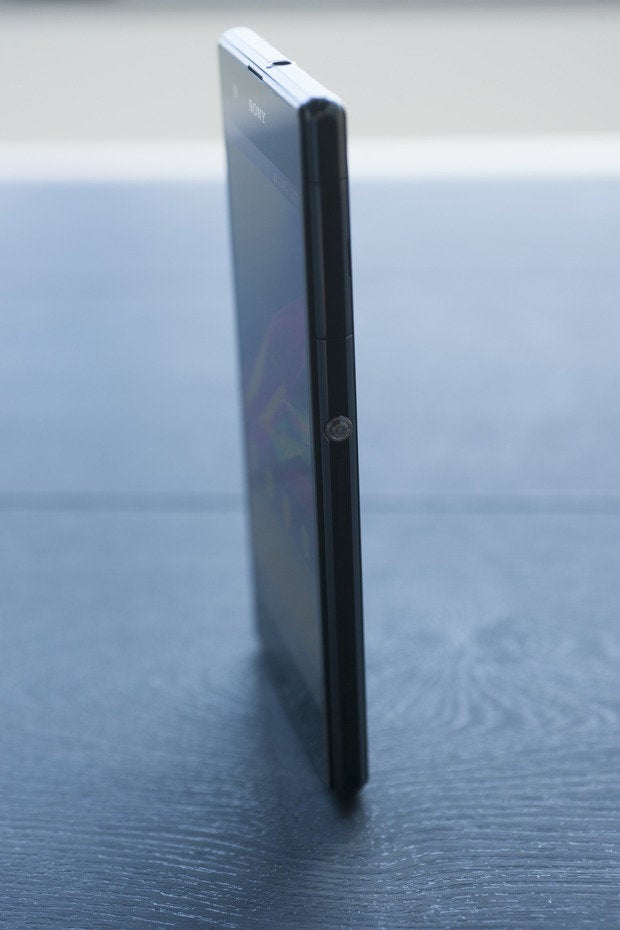 Homnick
Homnickat’s packed inside this phone?
The Z1S’s system-on-chip (SoC) is on par with many other phones out on the market, including the Samsung Galaxy Note 3 G2, which both launched late last year. It features a quad-core Snapdragon 800 processor, 2GB of RAM, 32GB of internal storage, as well as a microSD expansion slot. There were no issues multitasking between games apps of varying types the interface wasn’t bogged down either; screens transitioned fluidly everything felt speedy right out of the box. The only app that took a while to settle was the camera application, which takes a bit of time to calibrate on launch.
The Xperia Z1S’s 1080p 5-inch display is extremely bright at its highest setting quite dim at its lowest. There is a bit of color over-saturation, too, though not as bad as Samsung’s Super AMOD, although the blacks remain relatively black, other colors appear blown out at the highest brightness setting.
 Homnick
HomnickThe Xperia Z1S, as compared to the HTC One (M8) on the left, the Samsung Galaxy Note 3 on the right.
The Xperia Z1S’s 3,000mAh battery pack is a huge improvement over its predecessors, especially the Xperia Z Ultra. The Z1S managed nine hours 37 minutes in our video rundown tests, which places it at the top of our list alongside devices like the new HTC One Galaxy Note 3. It also features a myriad of power settings you can enable in the Settings panel, including STAMINA mode, which disables the background data when the screen is off.
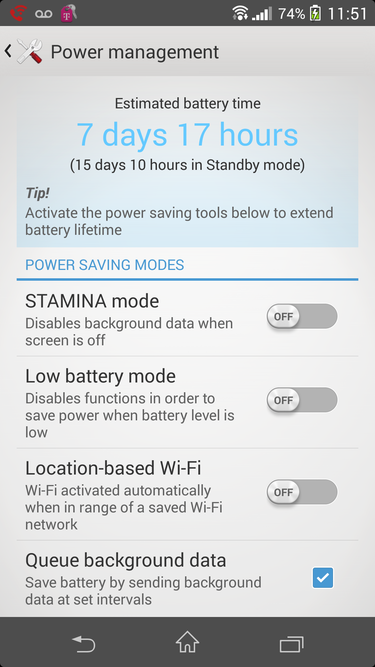
The Xperia Z1S has a multitude of power saving features.
Say cheese!
For the most part, has left Android’s camera capabilities up to the manufacturers (that’s supposedly going to change, if the recent rumors have any validity). Sony kicked it up a notch by leveraging its some of its point–shoot camera technology in its mobile devices.
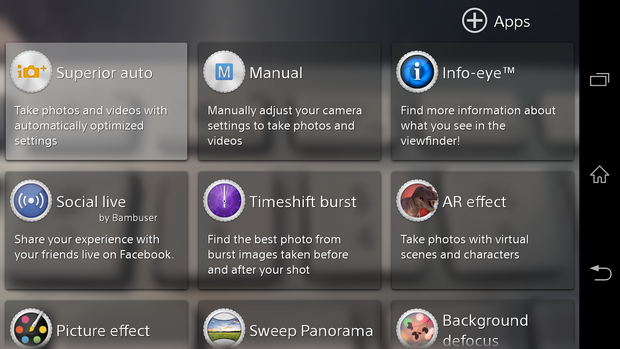
Sony offers a multitide of camera modes.
The Xperia Z1S’s 20-megapixel camera is truly impressive. By default, the camera app will shoot in Superior Auto mode take photos videos with automatically optimized settings. This works much better on the Z1S than my previous experience with last year’s Xperia Z, where the camera failed to adjust to the situation.

Test shots with the Xperia Z1S.
In our lab tests, photos came out bright a clear in both high low light situations. Outside shots looked great whether it was a sunny or a cloudy day, the flash didn’t blow out the subject, but rather enhanced it. My only concern is that it takes a while for the camera to focus, which sometimes resulted in unfocused or delayed photos.
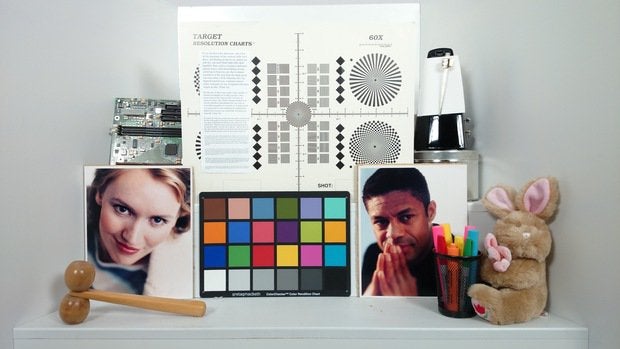
ctures taken with the Xperia Z1S came out crisp clear.
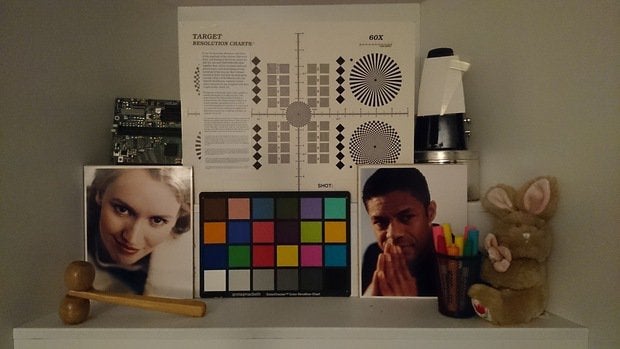
Even the low-light photos were more than passable.
There are also a few neat tricks the Xperia Z1S can do, like add Augmented Reality effects, Burst mode, Background defocus, which takes photos with a background blur lets you select the focal point before you snap a photo. You can then adjust how much you want the background blurred-out after the fact. There is also a mode called Info eye that will perform a search for you based on any lmarks, books, wine labels, business cards, barcodes that you snap a photo of.
The features may seem like a gimmick at first, but Sony took the time to refine each to make them something you’d truly want to use. The easy-to-use camera UI also ensures that you’re not pointing your finger all over the place trying to figure out what kind of camera mode to use.

ok, Ma! I’m underwater. Kind of.
An interface that’s Android-ish
Sony’s Xperia UI runs on Android 4.3 lly Bean while it isn’t as vanilla as stock Android, at least it’s not as heavily stylized as Samsung or ‘s Android interfaces. It’s at that sweet spot where you won’t have to forget everything you know about Android to relearn how to use another company’s version.
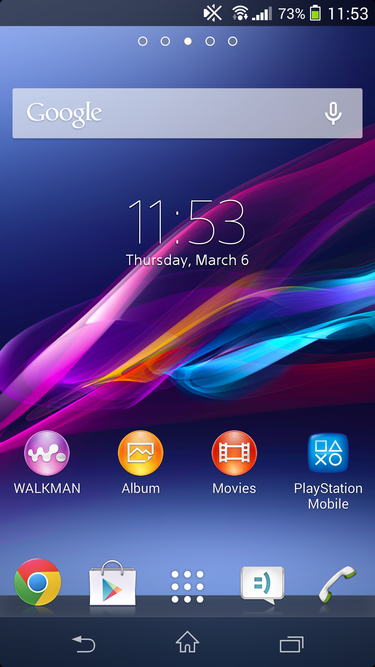
Sony put its own little flair on Android without overdoing it.
Some of its elements are quite helpful, too. Sony put the Quick Settings bar at the top of the Notifications panel so that you don’t have to click through to another screen to adjust the brightness or turn on Airplane Mode. You can adjust which ones you want displayed from the Settings panel.

Finally, a Notifications shade that isn’t taken up by icons things.
Its application drawer also offers a plethora of viewing options, including the ability to search through apps, set them up in your own order, or quickly launch whatever app stores you have installed.
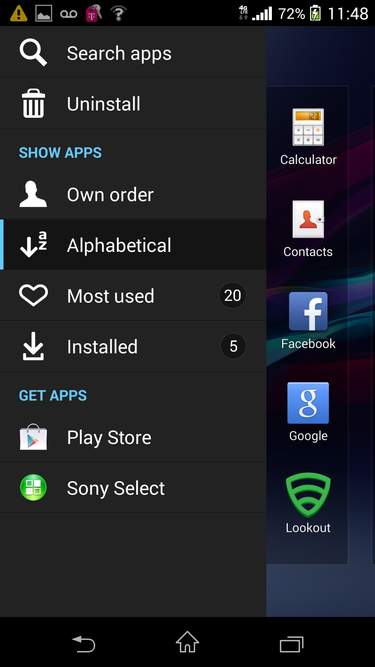
Options are always nice.
However, Sony is still playing the old Samsung card by cramming in its own suite of applications alongside ‘s. On the Home screen, Sony’s lkman, ayStation Mobile, Movies, bum applications are front center, though Chrome the ay Store make it into the dock, everything else is hidden in the application drawer. At least they’re there if you need them, Now is easily accessible with an upward swipe.
Give Sony a chance
Sony’s device launches last year were a bit better than average, but this year the company seems committed to knock it out of the park. The Xperia Z1S isn’t Sony’s flagship device for the year, but its impressive camera abilities, speedy processor, stylish outfitting are an indicator of how the company plans to regain some of its barely-there U.S. marketshare. If the Xperia Z1S is where Sony’s heading, then we can’t wait to see what’s next.


















